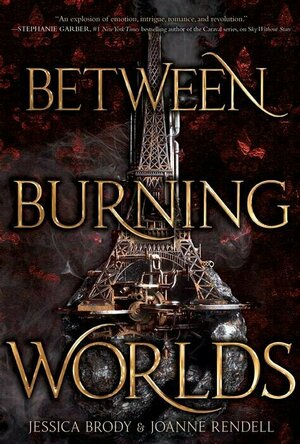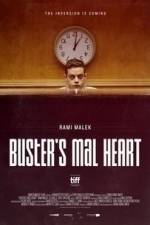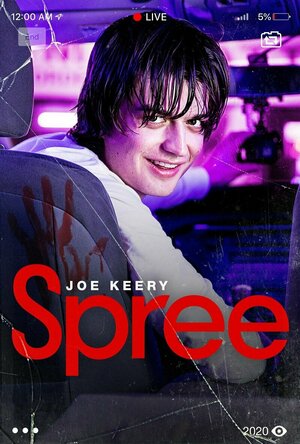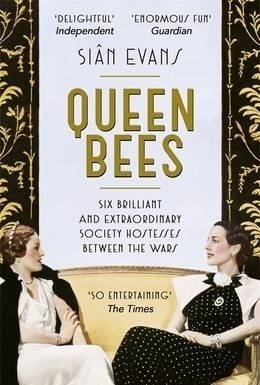Sophia (Bookwyrming Thoughts) (530 KP) rated Between Burning Worlds (System Divine #2) in Books
Mar 31, 2020
I’m super excited to get the chance to read the sequel in the System Divine trilogy because the first book promised some shenanigans are going to be in store. And I definitely don’t remember what happened in the first book, so cracking open to an overview of the first book is a blessing. If you’re like me and you reread maybe 1% of the time, you’re in good hands.
The second book in the System Divine trilogy starts right where Sky Without Stars ends, with each of the characters on their own path:
🚀 Marcellus secretly working with the Vanguarde, with the desire to stop General Bonnefacon from overthrowing the Patriarche of Laterre and taking the planet for his own.
🚀 Chatine ends up on Bastille’s harsh working conditions and wants to get out; even if it means getting herself indirectly involved with the Vanguarde.
🚀 Alouette is searching for the answers of her past with what little information she has; she’s not thrilled she’s been lied to by the sisters her entire life… but let’s be honest: who’s ever thrilled?
Much of Between Burning Worlds is further building up the world Brody and Rendell first introduced us to in Sky Without Stars, taking us to other planets and unknown places of Laterre. While it may seem the trio are on different paths, they’re more intertwined than they think.
Brody and Rendell kept me on my feet constantly.
I never liked General Bonnefacon, and if you want my honest opinion, he deserves charred bacon and nothing but charred bacon. Everyone just gets screwed over by him for his own gain. But Marcellus’ grandfather is seriously one of the most cunning characters of the series; he’s always upending everyone’s plans. It’s no wonder he’s still going. In this sequel to Sky Without Stars, the General continues being a key character constantly plotting his next move.
What a strategist and sharp mastermind. If I had to stan villains, he would be one of them. 11/10 would not mess with grandpa.
I’m in love with the new characters.
Between Burning Worlds introduces us to quite a few new characters in addition to the returning cast: Cerise, Gabriel, Etienne. I loved every second they were on the page; there are moments of banter and humor involved and it made this whopping sequel go by much quicker. 600+ pages felt like nothing. Someone protect Gabriel though, he’s such a cinnamon roll and I’m worried about what will happen to him in the third book. 🥺
Then again, none of the characters get a break or room to breathe, not with General Bonnefacon around at least. While Chatine and Alouette grow as characters from when we first meet them in book one, Marcellus undergoes the most character development here as he goes head to head with his grandfather. (Gabriel should still be protected though.) I’m hoping for the chance to see the three of them again in the next book.
Between Burning Worlds is an absolute trip, and it’s a good type of trip.
With new characters to the series and a brewing revolution on a corrupted planet, Brody and Rendell continue bringing readers on a trip through space while constantly keeping them on their toes until the very end.

Clarity: Clear Mind, Better Performance, Bigger Results
Book
LEARN TO CLEAR YOUR MIND AND THINK LIKE A WINNER We all have so much going on. A million different...
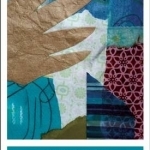
Haiti Glass
Book
Winner of the 2015 PEN Oakland Josephine Miles Literary Award In her debut collection of verse and...
Kirk Bage (1775 KP) rated Buster's Mal Heart (2016) in Movies
Jan 22, 2021
I had added it to my watchlist some time during my obsession with Rami Malek and Mr Robot, knowing he had popped up in several cameo roles in big films over the years, but keen to see him take a lead role before the Oscar train of Bohemian Rhapsody and A-list fame. It is also that kind of film that arthouse cinemas would show during indie festivals or on late night double bills; stepping stones, hopefully, for all concerned to bigger things.
Writer director Sarah Adina Smith hasn’t quite made it yet, so you probably haven’t heard of her. She directed 2 episodes of Hanna, which I liked a lot, and will be talking about on The Wasteland at some point, and a few other bits of TV, but that’s about it. Judged on this oddity there is a good deal of vision and talent going on – but not yet an eye for total coherence.
Buster doesn’t know what it is, and neither do the critics, listing it as a mystery, a drama, a thriller, a sci-fi and a crime film, which… ok, yes, it has elements of all those, but isn’t really any of them, also. The titular character played by Malek is an ethereal enigma trapped in his own weird existence, and through a series of out of time and out of sequence flashbacks we come to understand his journey and descent into madness, after encountering a down at heel salesman with a big conspiracy theory to pedal, called The Inversion.
It remains shrouded in ambiguity and strangeness for most of the modest, but not off-putting, 96 minute running time, as Malek grows a beard, loses a beard and grows a beard again. Even when all is said and done, it takes a minute to put it all together and figure out what the point of it was. As something curious to let wash over you, I have to say I kinda liked it. Malek was as committed and interesting to watch as he always is, and I was just happy that films like this can still get made.
Ultimately, possibly a short film idea stretched too thin into a feature, which is an all too familiar phenomenon for new directors. But, an idea interesting and original enough to earn the right to be thought of as “showing potential”. If Smith ever does make it as big as say Jim Jarmusch or Kelly Reichardt then the arthouse geeks like me will be looking back on this with great interest. You just wonder how many people will see it at all, now the days of post midnight movies on a set channel are pretty much over?
Sarah (7800 KP) rated Spree (2020) in Movies
Jan 24, 2021
Spree is a 2020 comedy horror film starring Joe Keery as Kurt Kunkle, a failing social media influencer who works as a driver for a rideshare app called Spree. Fed up of his lack of viewers, Kurt decides to fit out his car with cameras and livestream “The Lesson”, where he instructs viewers on how to become famous on social media while picking up passengers and murdering them. One of the passengers he lets go is comedian Jessie Adams (Sasheer Zamata), a star and social media success who Kurt becomes obsessed with over the course of his murderous evening.
Spree is definitely a fun film. The comedic horror style works very well, especially in the first half although later on it does make way for a more serious side. There’s a decent amount of blood and gore too and it has a wonderfully cheesy B-movie vibe about it. What makes Spree so fun though is Joe Keery. His performance as an influencer is entirely believable and it’s his charisma and baby-faced innocence that makes this film watchable. He spends the entirety of the film like he’s high and hyped up on energy drinks and while this does make his performance a little over the top, this is exactly what Spree needs. David Arquette as Kurt’s dad also brings a lot of fun although his screen time is sadly lacking.
Despite Spree’s dark comedic feel, there’s a more serious story and commentary underlying this film. It might look as though it’s making light of social media influencers, but actually it’s making a rather serious point of the pressures and negatives of the constant need influencers have to be liked and obtain more followers. Kurt’s story is rather sad, and even the other characters like Jessie are shown to have their own stories but still stuck in the same social media behaviour. The live streams used to shoot most of this film, with the likes and comments from viewers, emphasise the pitfalls and real life issues with social media.
Admittedly this live stream method does get a little thin by the end of the 90 minute run time, and after the initial few murders, it’s only Keery’s performance that holds the film up to the end. It isn’t helped that aside from Kurt, none of his victims are particularly likeable and it makes them very difficult to relate to or care about. And this also goes for Jessie who despite her heroine status, becomes unlikeable due to how she too bows to the pressure of social media.
I’m not a fan of the YouTube and influencer revolution, so for me Spree was an interesting take on this and social media in general. It has a good point to make and a serious message, although this may be overshadowed by the dark comedy and horror. With a great turn from Joe Keery, it’s a fun film but not entirely memorable.
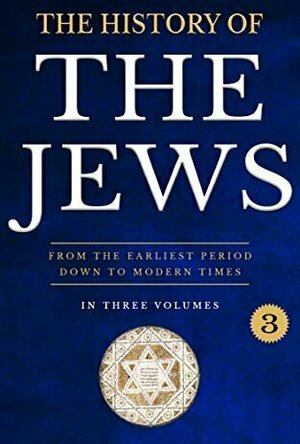
The History of the Jews
Book
The History Of The Jews: From The Earliest Period Down To Modern Times, In Three Volumes. (Vol. 3)...

Bonial - Kataloger och Butiker
Catalogs and Shopping
App
Erbjudanden, rabatter, rabattkoder från butiker nära dig. Njut av din shopping! Upptäck alla...

GSVExplorer
Navigation and Travel
App
Search and view Google street view from a visible map region Features - Tap on map view to search...

24/7 Coach Football
Sports and Education
App
24/7 Coach Football: The Professional Coaching App. Now being used across Europe,...
A spectacle of celebrity, talent and burning ambition, Queen Bees combines the biographical stories of six ambitious women who helped to shape the standards of British society between the two world wars. Londoner Siân Evans is a cultural historian who has previously worked with the Victoria and Albert Museum, National Trust and Design Museum, and takes great lengths to thoroughly research into her written subject in order to portray a highly accurate insight to the lives of historical figures. Due to the non-existent political status of women in the early 1900s, the women featured in this book are virtually unknown today, yet they had a great impact during the 20s and 30s and helped to shape the Britain of today.
Although not necessarily born into it, circumstances such as marriage meant these six women were regarded as upper class. In no particular order, the names impacting on the social revolution and thus featured in Queen Bees are as follows: Lady Nancy Astor, the first female MP; Lady Sybil Colefax, who became a friend of Edward VIII; Lady Emerald Cunard, also connected with the royal family; Mrs. Ronnie Greville, a rather formidable woman; Lady Edith Londonderry, the founder of the Women’s Legion; and Laura Corrigan, the youngest of the set. Evans talks the reader through these women’s careers as professional hostesses as they compete to throw the better party, entertaining famous writers and actors as well as members of royalty, both national and foreign.
What is perhaps the most interesting, and indeed the most worth learning, is the way a couple of these women altered the future of the British monarchy. Without their interference the future George VI would never have married Elizabeth Bowes-Lyon, and without their involvement in the relationship between Edward VIII and Wallis Simpson, George VI would never have come to the throne. This is such an important aspect of British history that has been widely left out and ignored. Without these hostesses influence we would all be experiencing a slightly different life.
In terms of the actual writing, Siân Evans manages fairly well to engage the reader as she relates the factual story in a more or less chronological way. A slight issue is the quick, often undetected, move from one woman to the next, resulting in a lot of confusion about who is who particularly at the beginning of the book. A lot of the narrative features other key figures from the same period and often moves away from the main characters, which, whilst interesting, is not what the reader necessarily expected from a book whose title Queen Bees suggested it was only going to be about the women’s lives.
Footnotes, quotes and extracts from letters and diaries help to make the book appear reliable, factual and believable. Some of the content, without back up, would have seemed rather fanciful or exaggerated. Queen Bees can be read as a source of entertainment or as a citation for historical research. What is found within these pages is a more unbiased account of the early twentieth century than would be found in numerous male dominated history textbooks.
Mature readers of all ages are likely to gain something from reading Queen Bees – pleasure, knowledge etc., however it is most likely to appeal to the contemporary feminist. With this in mind, be aware that the six hostesses were not feminists of their time; they were not involved in Suffragette movements and were fairly content to live off money earned by their husbands or fathers. Yet, on the other hand, they impacted on the future of Britain as much as the male politicians of the time. Highly political in content, Queen Bees is worth reading to discover our own history, but be prepared for initial confusion over who is who and rather lengthy paragraphs.
